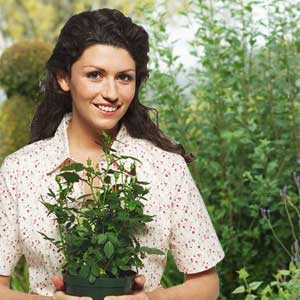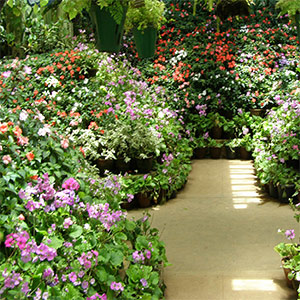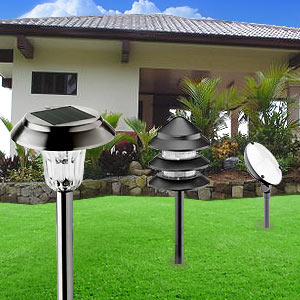Herb Garden Design

Since ancient times, herbs have played an important role in food and health. Apart from imparting unique flavoring to the food, they are filled with the goodness of curative powers that can cure many an ailment. Whether it is parsley to cure stomach ailments or rosemary for headaches, everyone is taking a renewed interest in herbs and how they can be grown at home. What better thing than to be able to have thyme and rosemary in your indoor herb garden or a range of exotic herbs in your outdoor herb garden. Find out more about herbs and how to plant them.
Herb garden
Herbs are of many kinds - aromatic, ornamental, culinary and medicinal. If you are keen on cultivating an herb garden, find out more on various herbs and how you can plan your herb garden. Culinary herbs are those that lend their strong flavor to food. While parsley is a popular garnish in many a dish, other culinary herbs are thyme, mint, basil, marjoram and sage. Rosemary and sage impart a strong flavor while herbs such as parsley and chives are used for blending. Dill, mint, tarragon and thyme are strong herbs that lend a characteristic accent. Some herbs are used to improve the taste of meats.
The crimson blossoms of Valerian and blue-colored chicory are ornamental in nature. Aromatic herbs are used to create aromatic oils that are used in cosmetic and toiletries. For planning an herb garden design, you must be familiar with the growth patterns of herbs. While some herbs are annual, others are biennial and perennial. While the annual herbs bloom for a season and die, the perennials bloom every season. Anise, basil, coriander, dill and summer savory are annual herbs. You can plant perennials such as chives, fennel, marjoram, mint and thyme in your herb garden plan. Caraway and parsley live for two seasons but bloom in the second season only.
Indoor herb garden
Growing an indoor herb garden in containers is not such a difficult thing. So don't despair if you live in a high rise and have just a small ledge to offer for an indoor herb garden. Not only is an indoor herb garden a boon when flavoring food, it lends a fresh and charming touch to your house. Do not place your container herb garden close to the windowsill where there are drafts. Ideally, your kitchen ledge is best for container indoor gardens.
A south or west-facing window can be chosen for your indoor herb garden. Clay or ceramic pots work well as containers for your herbs. A combination of basil, thyme, sage and rosemary and cilantro should do for a starter indoor herb garden. Start a container herb garden with some seeds or cuttings. You can choose dill, basil and Greek oregano. Do not go for tall herbs such as dill when using containers. You can opt for hanging baskets if the idea appeals to you. Ensure that you repot the herbs yearly and move the perennials outdoors and prune the herbs to keep the indoor herb garden in good shape.
Perennial herbs, however, will do better if you place them outdoors during the summer. Check for extremes in temperature since herbs don't take to them too well. Heat from the kitchen stove or radiator might shrivel and dry up your indoor herb garden. Ensure that the herbs get 6 - 8 hours of light every day. Keep on the lookout for insect infestation. You can rinse off any insects you see on your herbs. Avoid use of insecticides. Herbs can be used for cooking, tea and potpourri or just to enjoy their sharp fragrance.
Herb garden design
Herb garden design must be planned according to the herbs you intend to grow. Be it seasoning herbs or fragrant ones, ornamental herbs or medicinal ones, have an herb garden plan with layout and structure. You can experiment with colors and types when organizing your herb garden design. Select a site for the herb garden design, bearing in mind the soil fertility and drainage conditions. Since herbs don't grow well in wet soil, you have to ensure sufficient drainage of water. Do not attempt to add too many fertilizers to the soil.
You will end up with herbs with large leaves and poor flavor quality. Plan your herb garden in such a way that the perennials and biennials are not disturbed for the next year. You need not allot much space for your herb garden design. A small patch near the garage wall or near your kitchen door is sufficient. If you plan your herb garden correctly, you can save yourself the headache of replanting. Basil and mint are better in shady areas.
Check up on the height, foliage and spacing requirements of various herbs before getting your herb garden design in place. Decide on the bed keeping your space restrictions in mind. You should be able to easily access the herbs. Plan the herb garden design based on the height of the herbs and how they would complement each other.
Planting an herb garden
You can plant an herb garden with seeds. Late winter is the best time to plant your herb garden. But this should be done indoors so that you can transplant them to the outdoors in early spring. Plant herbs such as anise, coriander and dill directly into your herb garden since they don't transplant well. Do not plant or sow the seeds too deep.
Spread them evenly. Keep the soil moist during germination. Try planting new herbs in your garden each year. Harvest them in the mornings when the oils are at the highest concentration. You can dry or freeze the herbs for use later. Some herbs grow well with cuttings. You can cut lavender or divide tarragon and mint while planting your herb garden.
Top of the Page: Herb Garden Design
Tags:#herb garden #indoor herb garden #herb garden design #herb garden plan #planting an herb garden #container herb garden

Eco Friendly Homes
Garden Maintenance
Organic Gardening
Vegetable Garden Layout
Xeriscaping
Hydroponics Gardening
Feng Shui Garden
Ornamental Plant
Container Garden
Growing Succulents Indoors
Landscape Design Idea
Herb Garden Design
Window Garden
Lawn Mowing
Lawn Maintenance Tips
Orchid Care
Bonsai Tree
Cactus Plant
Thanksgiving Cactus
Rock Garden
Gardening Accessories

Bird Feeder
Leaf Blower
Solar Bird Bath
Lawn Sprinkler System
Outdoor Garden Furniture
Garden Fountain
Butterfly Garden
Electric Lawn Mower
Garden Pond
Landscaping

Landscaping
Landscape Lighting
Outdoor Canopy
Solar Garden Lights
Garage Plan
Home Improvement
Home Furnishing
Home Improvement Catalog
Feng Shui
Top of the Page: Herb Garden Design
Popularity Index: 101,362

